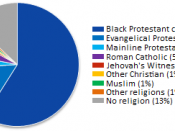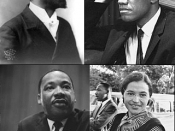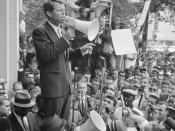Surveying the current state of racial discourse in America, Stephan and Abigail Thernstrom conclude, ÃÂToday we argue without a common language.ÃÂ Part of a growing number of scholars who were sympathetic to the cause of civil rights for black Americans in the 1960ÃÂs but who have since recoiled at the misapplication of the intentions of that movement, the Thernstroms believe that the language of fact and reason will provide a firmer foundation for black and white relations in the United States. Committed to race-neutral policies, the measuring stick by which they judge todayÃÂs racial policies, they counter the lack of intellectual rigor in popularly held explanations of racial disparities by using sociological studies and some seventy tables to bolster their contention that American society has changed in revolutionary ways. They also criticize the misuse of statistics to further policies at odds with the original intentions of civil rights legislation.
The book has three parts.
Part 1 traces the history of African Americans from the Jim Crow era through the triumphs and subsequent divisions in the Civil Rights movement. Part 2 traces social, economic, and political trends since the 1960ÃÂs, focusing on various misconceptions about the role of race in them. Part 3 analyzes the use of preferential policies.
Part 2 contains chapters on the rise of the black middle class, the changing relationship between city and suburb, poverty, crime, and politics. It is particularly valuable for isolating various misconceptions about race and tracing their harmful consequences for black progress and racial relations. One misconception is that poverty defines black America. Whereas racial activists have a vested interest in such a definition because it allows them to blame racism for poverty, the Thernstroms remind readers that most poor people in America are not black and the majority of blacks are...


